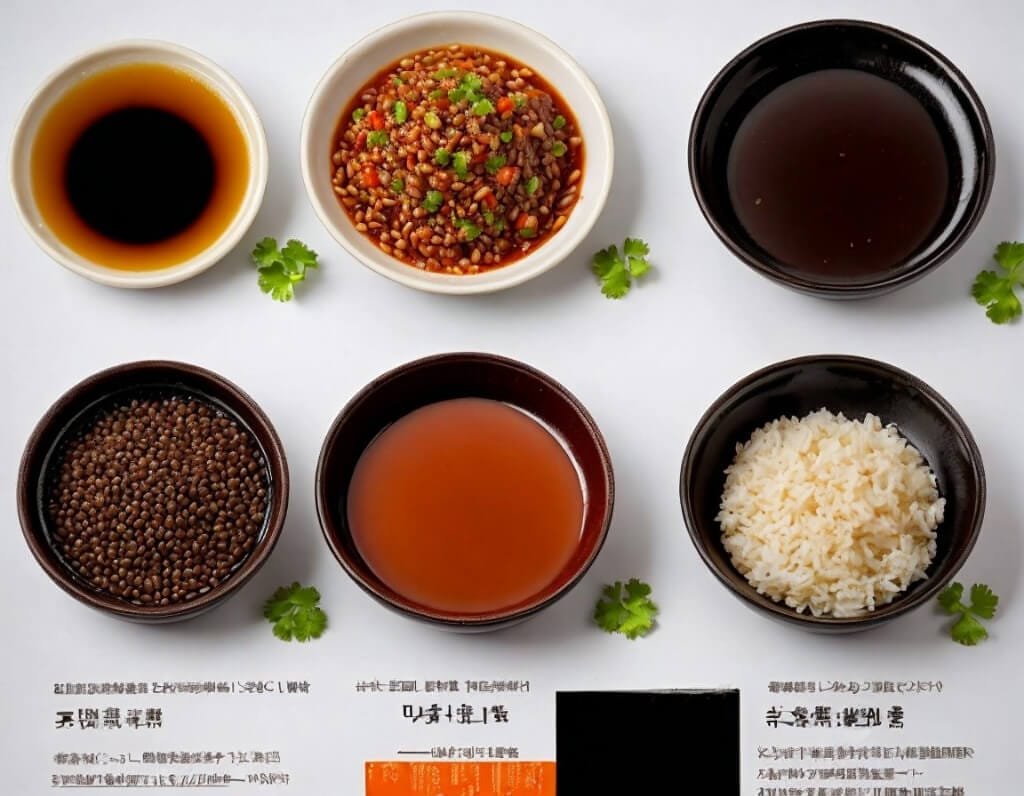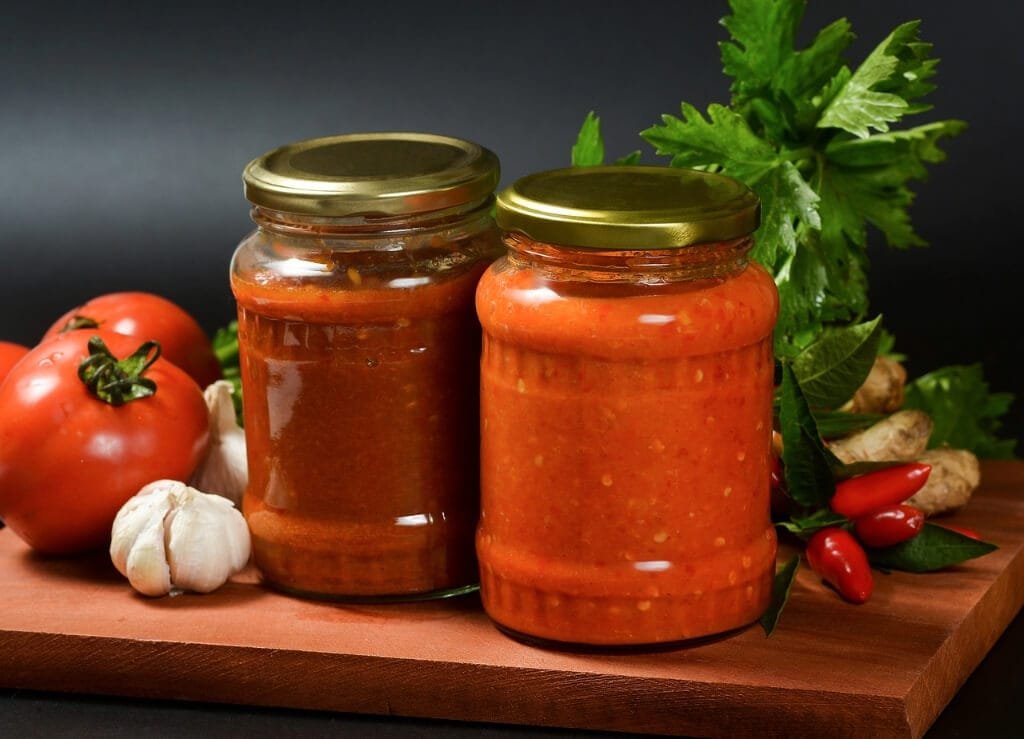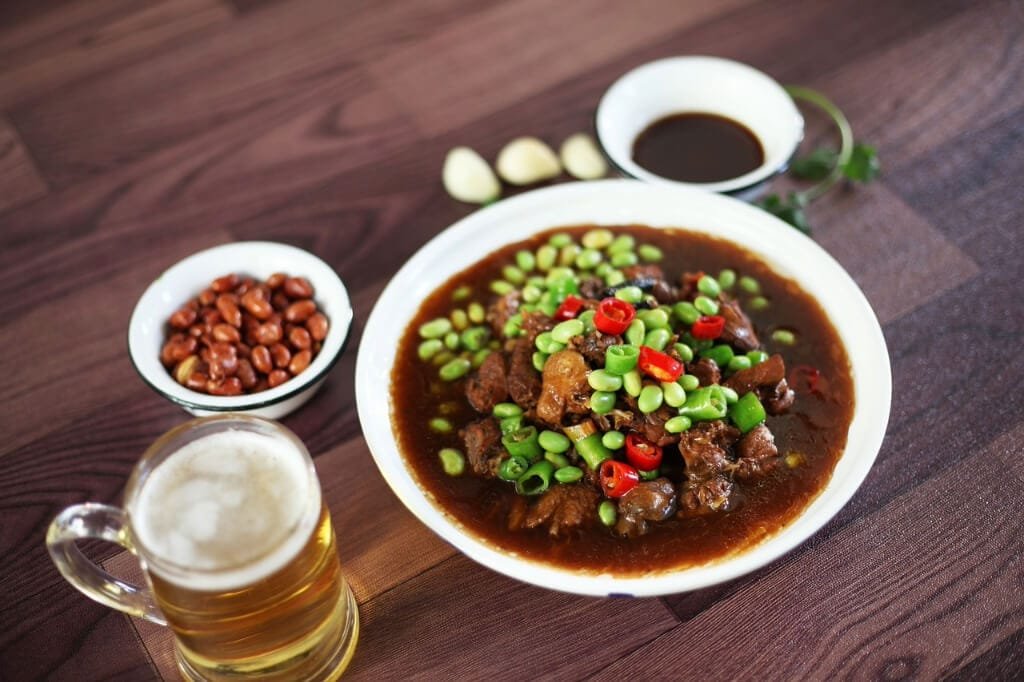Sauces have long been an integral part of culinary traditions around the world. They enhance flavor, texture, and appearance, transforming simple dishes into memorable meals. But have you ever wondered about the origins of sauces and who first introduced them? In this article, we’ll explore the fascinating history of sauces, from their earliest forms to their evolution into the diverse array we enjoy today.

What Defines A Sauce?
Before delving into the history of sauces, it’s essential to understand what constitutes a sauce. A sauce is a liquid or semi-liquid substance served with or used in the preparation of food. It serves multiple purposes: enhancing flavor, modifying texture, and adding visual appeal. Sauces can be classified into several types, including:
- Liquid Sauces: These are often used as a finishing touch, such as soy sauce or gravy.
- Semi-Liquid Sauces: Examples include tomato sauce and cream sauces, which may be used both in cooking and as a condiment.
- Emulsified Sauces: These sauces, like mayonnaise or hollandaise, involve a combination of oil and water-based ingredients.
Sauces play a crucial role in cooking by balancing flavors, adding moisture, and creating a more appealing dish.
Ancient Civilizations And Early Sauces
The origins of sauces can be traced back to ancient civilizations, where early sauces played a vital role in culinary practices. Another significant contributor to the history of early sauces was ancient Persia, known for its sophisticated culinary practices and rich use of herbs and spices. Persian cuisine included sauces that combined ingredients like pomegranate, yogurt, and walnuts to create complex flavor profiles.
The Persians were pioneers in using sweet and sour flavors, often incorporating fruits like apricots and grapes into their sauces, which were typically served with meat and rice dishes. These early sauces not only added flavor but also demonstrated the Persian emphasis on balancing the four key tastes: sweet, sour, salty, and bitter. The Persian approach to sauces greatly influenced the development of Middle Eastern and Central Asian cuisines, with its focus on fresh, aromatic ingredients and the artful blending of flavors. This influence can still be seen today in the use of tahini-based sauces, yogurt dips, and fruit-infused marinades that are common across the region. Persian culinary traditions highlight how ancient sauces were more than just a culinary afterthought; they were a sophisticated expression of culture and taste that contributed to the richness of the global culinary tapestry.

Mesopotamian Influence
The earliest known sauces date back to Mesopotamia, one of the cradles of civilization. The Mesopotamians used a fermented fish sauce known as “garum”. This condiment, made from fermented fish and salt, was a staple in their diet. Recipes for these early sauces were recorded on cuneiform tablets, showcasing their importance in ancient Mesopotamian cuisine.
Egyptian Contributions
In ancient Egypt, sauces were also significant. Egyptians used a variety of ingredients such as mustard, cumin, and honey to create sauces. These sauces were not only enjoyed with meals but were also integral to religious rituals and mummification practices, reflecting their deep cultural significance.
Indian And Southeast Asian Beginnings
In the Indian subcontinent and Southeast Asia, early sauces included chutneys and curries. These sauces often featured a blend of spices, herbs, and fruits, such as tamarind and mango. The use of yogurt in these sauces added a unique texture and flavor, demonstrating an advanced understanding of flavor combinations.
The Role Of Sauces In Ancient Greek And Roman Cuisine
Sauces continued to evolve in ancient Greece and Rome, where they became more refined and diverse. In addition to “garum” and “liquamen”, the Romans developed a variety of other sauces that incorporated herbs, spices, and wine, showcasing their sophisticated approach to flavoring food. The ancient Roman cookbook attributed to Apicius contains numerous recipes for sauces that used ingredients like vinegar, honey, pepper, cumin, and coriander, mixed with olive oil and wine to create complex flavor profiles.
These sauces were designed to complement the rich and diverse diet of the Roman elite, often accompanying dishes like roasted meats, fish, and vegetables. Romans were also known for creating thick, gravy-like sauces made from reduced wine (“oenogarum”), which added depth and richness to meals. Sauces were seen as a mark of refinement and culinary expertise, reflecting the Romans’ appreciation for balancing sweet, sour, and savory flavors. The use of aromatic herbs and imported spices from the far reaches of the Roman Empire, such as cinnamon and cloves, further demonstrated the importance of sauces in not only enhancing taste but also in displaying wealth and cultural sophistication. This extensive use of sauces highlights how integral they were to the identity of Roman cuisine and their lasting influence on European culinary traditions.

Garum And Liquamen
The Greeks and Romans are well known for their use of fermented fish sauces, particularly “garum” and “liquamen”. These sauces were made by fermenting fish with salt, producing a complex, savory flavor. They were used extensively in Roman cooking and were considered a delicacy. The methods of production and variations of these sauces highlight their significance in Roman culinary practices.
Other Roman Sauces
Roman cuisine also featured other sauces, such as “Apicius” recipes, which included “caroenum” (a reduced wine sauce) and “oenogarum” (a wine and fish sauce). These sauces were not only used to enhance flavors but also played a role in food preservation.
Chinese Culinary Innovations
China has a rich history of sauce-making, with early innovations that influenced neighboring cultures. Chinese culinary innovations not only revolved around the development of soy-based sauces and fermented bean pastes but also emphasized the art of balancing flavors, which is a hallmark of Chinese cooking. In addition to soy sauce, the Chinese created a variety of early condiments that incorporated a combination of salty, sweet, sour, and spicy elements. One such example is hoisin sauce, a sweet and salty sauce made from fermented soybeans, garlic, vinegar, and various spices.
This sauce was used to glaze meats, particularly in Cantonese cuisine, and as a dipping sauce, adding a rich, savory flavor to dishes. Another key condiment was black bean sauce, made from fermented black soybeans, which added a deep, earthy flavor to stir-fries and braised dishes. Additionally, the use of plum sauce, made from fermented plums, sugar, and vinegar, highlighted the Chinese innovation in incorporating fruit into their sauces, providing a unique blend of sweetness and tartness. These innovations in sauce-making demonstrated the Chinese culinary philosophy of creating harmony in dishes, balancing bold flavors to achieve a perfect taste. The Chinese approach to sauces laid the groundwork for many of the flavor principles that continue to shape not only Chinese cuisine but also the global culinary landscape today.
Early Soy-Based Sauces
In ancient China, soy-based sauces emerged as a fundamental component of cuisine. These sauces were made from fermented soybeans and salt, creating a distinct umami flavor. Soy sauce became a staple in Chinese cooking and spread to other Asian countries, including Japan and Korea.

Fermented Bean Pastes
In addition to soy sauce, fermented bean pastes were also popular in Chinese cuisine. These pastes, made from fermented soybeans or other legumes, added depth and complexity to dishes. The use of these sauces demonstrates the early sophistication of Chinese culinary practices.
Medieval Europe And The Evolution Of Sauces
During the medieval period, European sauces evolved with new ingredients and influences. The evolution of sauces in medieval Europe was significantly influenced by the interactions with Islamic cuisine, particularly through the cultural exchanges during the Crusades and the Moorish presence in Spain. Islamic culinary traditions, which were rich in spices and complex flavor combinations, introduced European cooks to new ingredients such as saffron, cinnamon, nutmeg, and citrus fruits. These spices and ingredients, often brought back by crusaders or traded via the flourishing spice routes, began to appear in European kitchens, revolutionizing sauce-making.
Islamic sauces, known for their aromatic blends, often included ingredients like almonds and dried fruits, which found their way into European sauce recipes. This cross-cultural influence led to the creation of sauces that blended sweet and savory flavors, a hallmark of medieval European cooking. For example, sauces such as “cameline”, made with cinnamon, ginger, and bread crumbs soaked in vinegar, showcased the integration of exotic spices into the medieval European diet. The infusion of Islamic culinary techniques and ingredients into European cooking not only diversified the flavors of sauces but also elevated them to a new level of complexity, laying the foundation for the development of more sophisticated sauce recipes in the Renaissance and beyond.
Sauces In The Middle Ages
Medieval European sauces often featured spiced wine and vinegar as key ingredients. These sauces were used to complement meats and other dishes. Ingredients such as almonds, ginger, and saffron were commonly used, reflecting the era’s trade and cultural exchanges.
The Influence Of The Silk Road
The Silk Road played a significant role in introducing new spices and ingredients to Europe. This trade route facilitated the exchange of culinary practices and ingredients, leading to the development of new sauces and flavor profiles.
The Renaissance And The Birth Of Modern Sauces
The Renaissance period marked a significant shift in the development of sauces, with advancements in cooking techniques and ingredients. The Renaissance era was a significant exploration and trade, leading to the Columbian Exchange, which profoundly impacted the development of sauces in Europe. The exchange introduced European chefs to a wealth of new ingredients from the Americas, such as tomatoes, chili peppers, and chocolate, which began to influence culinary practices. Initially met with skepticism, tomatoes eventually became a staple in Italian cuisine, leading to the creation of tomato-based sauces that are now synonymous with Italian dishes, such as marinara sauce. Chili peppers, introduced through Spanish and Portuguese traders, also found their way into various European sauces, adding a new dimension of heat and flavor.
The use of chocolate, which the Spanish brought back from the New World, inspired the creation of both sweet and savory sauces, incorporating chocolate’s unique bitterness. This influx of new ingredients not only expanded the range of flavors available to chefs but also encouraged experimentation and innovation in the kitchen. As a result, sauces became more varied and sophisticated, moving beyond the simple spiced wine reductions of the medieval period to more complex, layered creations that reflected the new global connections of the Renaissance. These developments laid the groundwork for what we now recognize as modern European sauces, deeply rooted in a blend of Old World techniques and New World ingredients.

Changes In Culinary Techniques
During the Renaissance, cooking techniques became more refined, and sauces began to play a more prominent role in cuisine. The introduction of tomato-based sauces, following the Columbian exchange, was a major development. Italian cuisine, in particular, saw the creation of classic sauces such as béchamel and marinara, which remain popular today.
Sauces In The Americas
The Americas have a rich history of sauces, shaped by indigenous cultures and European influences. In the Americas, the fusion of indigenous and European culinary traditions led to the creation of unique and flavorful sauces that reflect a blend of cultures and ingredients. Indigenous peoples in Mesoamerica had long used ingredients such as chili peppers, tomatoes, and cacao in their sauces, creating complex and vibrant flavors. For instance, mole, a rich, multi-layered sauce made from ingredients like chili peppers, chocolate, and various spices, showcases the indigenous expertise in combining diverse elements to create depth and complexity. With the arrival of Europeans, these indigenous sauces were influenced by new ingredients and techniques brought from across the Atlantic.
European settlers introduced ingredients like garlic, onions, and various herbs, which were incorporated into traditional indigenous recipes, enhancing and diversifying the sauces. This blending of culinary practices resulted in new sauce variations, such as the tangy and spicy salsas that accompany many Latin American dishes today. The fusion of indigenous and European influences not only enriched the flavor profiles of American sauces but also created a dynamic culinary landscape that reflects the diverse cultural heritage of the Americas. This ongoing exchange of ingredients and techniques continues to shape the evolution of sauces in the region, celebrating a rich history of culinary innovation and adaptation.
Pre Columbian Sauces
Before European contact, indigenous cultures in Mesoamerica developed their sauces, such as mole and salsa. These sauces often featured ingredients like chocolate, chili peppers, and tomatoes, showcasing the diverse flavors of pre-Columbian cuisine.
Influence Of European Colonization
European colonization introduced new ingredients and culinary techniques to the Americas, leading to the evolution of indigenous sauces. This fusion of ingredients and styles created a unique culinary landscape in the New World.
The Industrial Revolution And Sauce Production
The Industrial Revolution brought about transformative changes in sauce production, particularly through the advent of convenience foods and the standardization of recipes. As industrialization progressed, advancements in manufacturing technology and food preservation techniques allowed sauces to be mass-produced and widely distributed. The introduction of bottling and canning technologies made it possible to preserve sauces for longer periods, leading to a significant increase in their availability.
Popular sauces like ketchup and Worcestershire sauce, which were once made from scratch, became commercial staples, with standardized recipes ensuring consistent quality and flavor. This shift not only made sauces more accessible to the general public but also influenced consumer expectations and culinary practices. The rise of convenience foods, including pre-made sauces and ready-to-use condiments, changed how people approached cooking, making it easier to add complex flavors to dishes with minimal effort. The standardization of sauce production during the Industrial Revolution laid the groundwork for the global proliferation of sauces, contributing to their integration into everyday cooking and establishing them as essential components of modern cuisine.
Mass Production Of Sauces
With the advent of industrialization, sauces such as ketchup and Worcestershire sauce became widely available. Mass production and bottling made these sauces accessible to a broader audience, transforming sauce consumption patterns.
Commercialization Of Sauces
The commercialization of sauces led to the development of new products and flavors. Bottled sauces became a staple in households and restaurants, reflecting the changing dynamics of food production and consumption.
Modern Sauces And Global Fusion
In recent times, sauces have continued to evolve, reflecting global culinary trends. In the contemporary culinary landscape, the rise of global cuisines and the phenomenon of fusion cooking have significantly influenced the evolution of modern sauces. As international travel and communication have increased, chefs and home cooks alike have had greater access to a diverse array of ingredients and culinary techniques from around the world. This exposure has led to the creation of fusion sauces that blend elements from different culinary traditions to produce innovative and exciting flavors.
For example, Sriracha, a Thai chili sauce, has gained global popularity and is now commonly used in various cuisines, from American burgers to French fries. Similarly, teriyaki sauce, originally from Japan, has been adapted into a variety of dishes worldwide, reflecting its versatility and appeal. The incorporation of global ingredients, such as miso, sambal, and harissa, into traditional sauces has created new flavor profiles that cater to diverse palates. This cross-cultural exchange has not only expanded the repertoire of sauces available but also encouraged culinary creativity and experimentation. The result is a dynamic and ever-evolving landscape of sauces that reflect the blending of global influences and the innovative spirit of modern cooking.
Rise Of Global Cuisines
The globalization of cuisine has introduced a diverse range of sauces to the culinary world. Popular modern sauces, such as Sriracha, chimichurri, and tzatziki, showcase the fusion of different culinary traditions and flavors.

Influence Of Globalization
Globalization has led to the development of new sauces and flavor combinations. The exchange of culinary practices and ingredients has enriched the world of sauces, creating a dynamic and ever-evolving landscape.
The Future Of Sauces
As we look to the future, sauces are likely to continue evolving in response to changing trends and technologies. As the culinary world moves towards greater health consciousness and sustainability, the future of sauces is likely to be shaped by these evolving trends. Consumers are increasingly seeking sauces that align with healthier eating habits and environmental concerns, leading to innovations in sauce-making. This shift is prompting the development of sauces with reduced sugar, lower sodium, and natural ingredients, catering to those who are mindful of their dietary intake.
Additionally, there is a growing demand for plant-based and organic sauces that avoid artificial additives and preservatives. Sustainable practices are also influencing sauce production, with a focus on using locally sourced ingredients and eco-friendly packaging to minimize environmental impact. The rise of functional sauces, which offer added health benefits such as probiotics or anti-inflammatory properties, reflects the merging of culinary enjoyment with wellness. As these trends continue to evolve, the sauce industry will likely embrace new technologies and ingredients to meet consumer preferences, creating a future where sauces are not only flavorful but also align with modern values of health and sustainability.
Trends In Sauce Making
Current trends in sauce-making include a focus on plant-based and sustainable ingredients. Health-conscious consumers are also seeking sauces with reduced sugar and salt content, reflecting broader dietary trends.
Role Of Technology
Advancements in technology are playing a role in the development of new sauces. Innovations in food science and production methods are likely to lead to new flavors and textures in the future.
Consumer Preferences
Consumer preferences will continue to shape the future of sauces. As culinary tastes evolve, sauces will adapt to meet new demands and preferences, ensuring their continued relevance in the culinary world.
Final Thoughts
The history of sauces is a testament to their enduring importance in cuisine. From their ancient origins to modern innovations, sauces have played a crucial role in enhancing flavor, texture, and appearance in cooking. The evolution of sauces reflects cultural exchanges, technological advancements, and changing culinary trends, showcasing their significance across time and space. As we move forward, sauces will undoubtedly continue to evolve, offering new and exciting possibilities for the future of food.
FAQs
Who Invented The First Sauce?
The first sauces can be traced back to ancient civilizations such as Mesopotamia and Egypt. The earliest known sauce, “garum”, was a fermented fish sauce used by the Mesopotamians.
What Was The First Sauce In History?
The first known sauce in history was “garum”, a fermented fish sauce used by ancient Mesopotamians and later adopted by the Greeks and Romans.
How Did Sauces Evolve?
Sauces evolved through various cultural influences and technological advancements. From ancient fermented fish sauces to modern global flavors, sauces have adapted to changing tastes and ingredients over centuries.
What Are Some Examples Of Modern Sauces?
Modern sauces include popular varieties like Sriracha, chimichurri, and tzatziki. These sauces reflect global culinary influences and trends, showcasing a diverse range of flavors and styles.
What Trends Are Shaping The Future Of Sauces?
Current trends in sauce-making include a focus on plant-based ingredients, sustainability, and health-conscious options. Advances in food technology and changing consumer preferences are likely to influence future sauce developments.
Also Read: Who Invented The Ship First?
